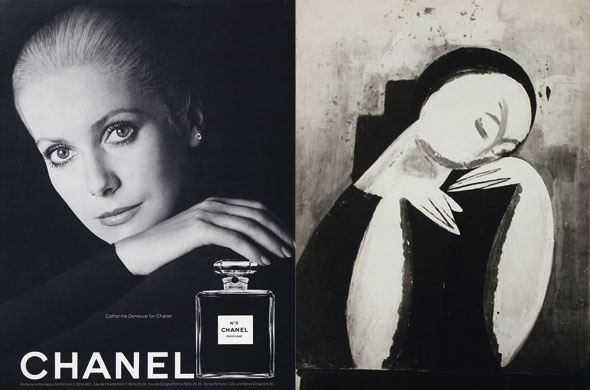'There is only one Chanel'
Rarely seen without her trademark pearls or beautifully pareddown outfits, she will forever be associated with elegance and aspiration. To own a Chanel suit is to have arrived. Since the 1920s, women the world over have been magnetically drawn to her peerless choice of fabrics, handbags and trademark perfumes. Chanel No5 remains the world’s top-selling perfume, and its history forms the centrepiece of the new exhibition, Culture Chanel.
Chic, cool and sophisticated, No5 was launched in 1921, a unique mix of blooms including jasmine, iris and rose, plus a further 77 ingredients, all delicately mixed for her personal taste and which to this day remain a secret. Perfume ‘is the unseen, unforgettable, ultimate accessory of fashion… that heralds your arrival and prolongs your departure’, Coco Chanel once declared. It was a maxim she lived by; before her arrival each day, an assistant would spritz the entrance to her building on Rue Cambon.

The building still houses the ground-floor shop, the haute couture workrooms and chief designer Karl Lagerfeld’s study. Visitors insist that the scent still lingers in the mirrored staircase and Chanel’s personal apartment – she would spray No5 on to the live coals in the fireplace.
It is a portrait that belies her rather more humble origins. She was born Gabrielle Bonheur Chanel in Saumur in 1883. Her mother died when Coco was just six years old and, shortly afterwards, she was placed in an orphanage by her father, who left for a life on the road as a peddler. She was raised by nuns, who changed the course of her life by teaching her to sew. Until her death in 1971, attention to detail remained paramount in everything she touched, and the house of Chanel still employs over 100 seamstresses working tirelessly on her designs.
Much has been made of how she came by the name of Coco, with some assuming it was a childhood nickname that stuck. It was, in fact, a leftover from a brief incarnation as a nightclub singer in the clubs of Vichy and Moulins. Here she was called Coco, and the suggestions are that the name came from one of the songs she used to sing. Chanel herself, however, said it was a ‘shortened version of cocotte, the French word for kept woman’.
With her radical bob, bright-red lipstick and ever-present cigarette, Coco Chanel embodied the striking modern woman, and it was fitting that English actress Keira Knightley was chosen as ambassador for the brand in 2007. When she wed James Righton earlier this month, Knightley wore a recycled dress topped with a classic Chanel jacket – all ‘very Coco’, as one insider commented.
Coco never married, but not for want of suitors. Her boyfriends were almost as high profile as her intertwined CC logo. They included the English industrialist Arthur ‘Boy’ Capel, who lent her the money to buy Rue Cambon, and the composer Igor Stravinsky. She met the second Duke of Westminster, Hugh ‘Bendor’ Grosvenor, the richest man in Europe, aboard his yacht in 1923, and the two started a decades-long relationship. In response to his marriage proposal, she reportedly said, ‘There have been several Duchesses of Westminster – but there is only one Chanel!’ There can be few who would disagree.
Culture Chanel is at the Palais de Tokyo in Paris until 5 June. Entry free.


